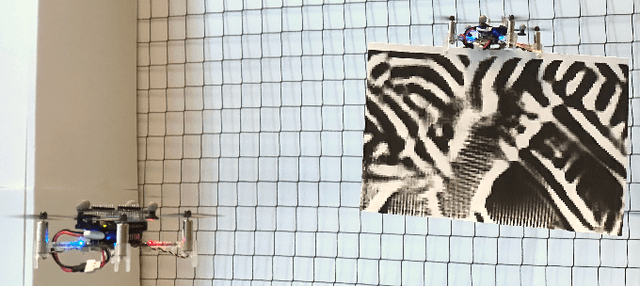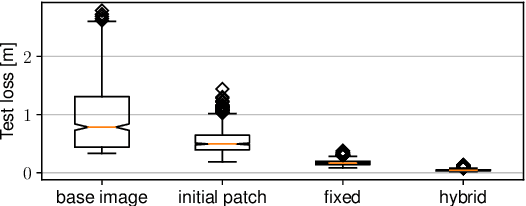Khaled Wahba
Neural-Augmented Incremental Nonlinear Dynamic Inversion for Quadrotors with Payload Adaptation
Mar 12, 2025Abstract:The increasing complexity of multirotor applications has led to the need of more accurate flight controllers that can reliably predict all forces acting on the robot. Traditional flight controllers model a large part of the forces but do not take so called residual forces into account. A reason for this is that accurately computing the residual forces can be computationally expensive. Incremental Nonlinear Dynamic Inversion (INDI) is a method that computes the difference between different sensor measurements in order to estimate these residual forces. The main issue with INDI is it's reliance on special sensor measurements which can be very noisy. Recent work has also shown that residual forces can be predicted using learning-based methods. In this work, we demonstrate that a learning algorithm can predict a smoother version of INDI outputs without requiring additional sensor measurements. In addition, we introduce a new method that combines learning based predictions with INDI. We also adapt the two approaches to work on quadrotors carrying a slung-type payload. The results show that using a neural network to predict residual forces can outperform INDI while using the combination of neural network and INDI can yield even better results than each method individually.
Kinodynamic Motion Planning for a Team of Multirotors Transporting a Cable-Suspended Payload in Cluttered Environments
Oct 05, 2023



Abstract:We propose a motion planner for cable-driven payload transportation using multiple unmanned aerial vehicles (UAVs) in an environment cluttered with obstacles. Our planner is kinodynamic, i.e., it considers the full dynamics model of the transporting system including actuation constraints. Due to the high dimensionality of the planning problem, we use a hierarchical approach where we first solve the geometric motion planning using a sampling-based method with a novel sampler, followed by constrained trajectory optimization that considers the full dynamics of the system. Both planning stages consider inter-robot and robot/obstacle collisions. We demonstrate in a software-in-the-loop simulation that there is a significant benefit in kinodynamic motion planning for such payload transport systems with respect to payload tracking error and energy consumption compared to the standard methods of planning for the payload alone. Notably, we observe a significantly higher success rate in scenarios where the team formation changes are needed to move through tight spaces.
Kidnapping Deep Learning-based Multirotors using Optimized Flying Adversarial Patches
Aug 01, 2023



Abstract:Autonomous flying robots, such as multirotors, often rely on deep learning models that makes predictions based on a camera image, e.g. for pose estimation. These models can predict surprising results if applied to input images outside the training domain. This fault can be exploited by adversarial attacks, for example, by computing small images, so-called adversarial patches, that can be placed in the environment to manipulate the neural network's prediction. We introduce flying adversarial patches, where multiple images are mounted on at least one other flying robot and therefore can be placed anywhere in the field of view of a victim multirotor. By introducing the attacker robots, the system is extended to an adversarial multi-robot system. For an effective attack, we compare three methods that simultaneously optimize multiple adversarial patches and their position in the input image. We show that our methods scale well with the number of adversarial patches. Moreover, we demonstrate physical flights with two robots, where we employ a novel attack policy that uses the computed adversarial patches to kidnap a robot that was supposed to follow a human.
Efficient Optimization-based Cable Force Allocation for Geometric Control of Multiple Quadrotors Transporting a Payload
Apr 05, 2023Abstract:We consider transporting a heavy payload that is attached to multiple quadrotors. The current state-of-the-art controllers either do not avoid inter-robot collision at all, leading to crashes when tasked with carrying payloads that are small in size compared to the cable lengths, or use computational demanding nonlinear optimization. We propose an extension to an existing efficient geometric payload transport controller to effectively avoid such collisions by designing an optimized cable force allocation method, and thus retaining the original stability properties. Our approach introduces a cascade of carefully designed quadratic programs that can be solved efficiently on highly constrained embedded flight controllers. We demonstrate our method on challenging scenarios with up to three small quadrotors with various payloads and cable lengths, with our controller running in real-time directly on the robots.
 Add to Chrome
Add to Chrome Add to Firefox
Add to Firefox Add to Edge
Add to Edge